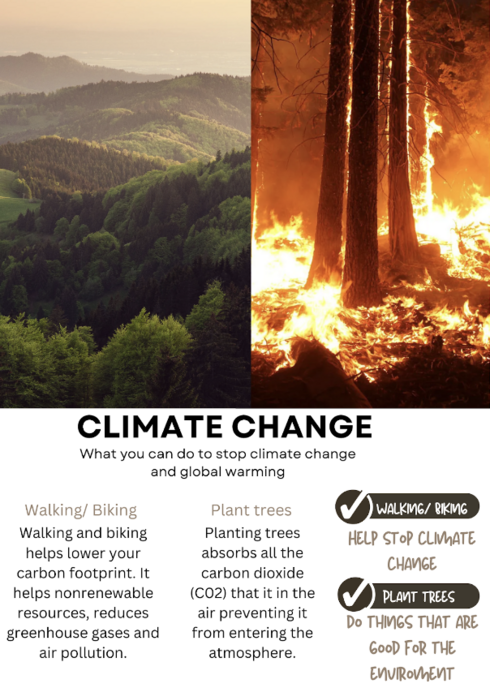Ms. Tarin’s 6th grade class at Jefferson Middle School in San Gabriel, California ventured on a journey to explore climate change and the roles we play within our environments.
In October of 2022, my science classes began learning about carbon footprints and the many effects humans have on our planet. The goal was to help students make personal connections to the environment, discover where they fit into the bigger picture of climate change, and believe that they can make a difference.
My students started the learning journey by using an online carbon calculator tool to understand how the amount of the trash they created and the hours they spent each day on their electronic devices impacted our planet. This sparked a sense of responsibility, and I started to observe students reminding each other to unplug their Chromebooks and to avoid wasting any food or snacks at lunch time.
However, the more the students learned about the behaviors that contributed to carbon footprints, the more frustrated they became about what they could do about it. I heard things like, “How can we make a difference? It’s so hard!” I wanted to find a resource to help answer their concern and get them feeling encouraged about what they can do to prevent further damage to our planet.
After browsing resources from the WWF website, I signed my class up to participate in the Conservation in the Classroom livestream, “The Connection Between Forests and Climate Change”. The livestream presentation given by WWF scientist Josefina Braña Varela addressed the importance of spreading awareness, researching future careers in climate work, and protecting our environment. My students learned from Josefina that there was actually much more they could do to help protect our planet.
Participating in the livestream ignited the students’ passion further; they were hungry to do more. We created digital PSAs to inform the public about climate change and researched future careers in environmental science. During this research, the students learned of an environmentalist whose mission was to plant one million tree seeds. They loved this idea and wanted to be part of the action. They posed the question, “What is the fastest way to plant as many seeds as possible?” To conclude our learning journey, students collaborated to design and construct their own re-seeding machines.
Throughout this experience, students learned new vocabulary, practiced critical thinking, conducted scientific research, and made personal connections to the environment. They learned that the role they played was much more important to the future of our planet than they ever imagined. Look out world, there is a new generation of conservationists coming!




